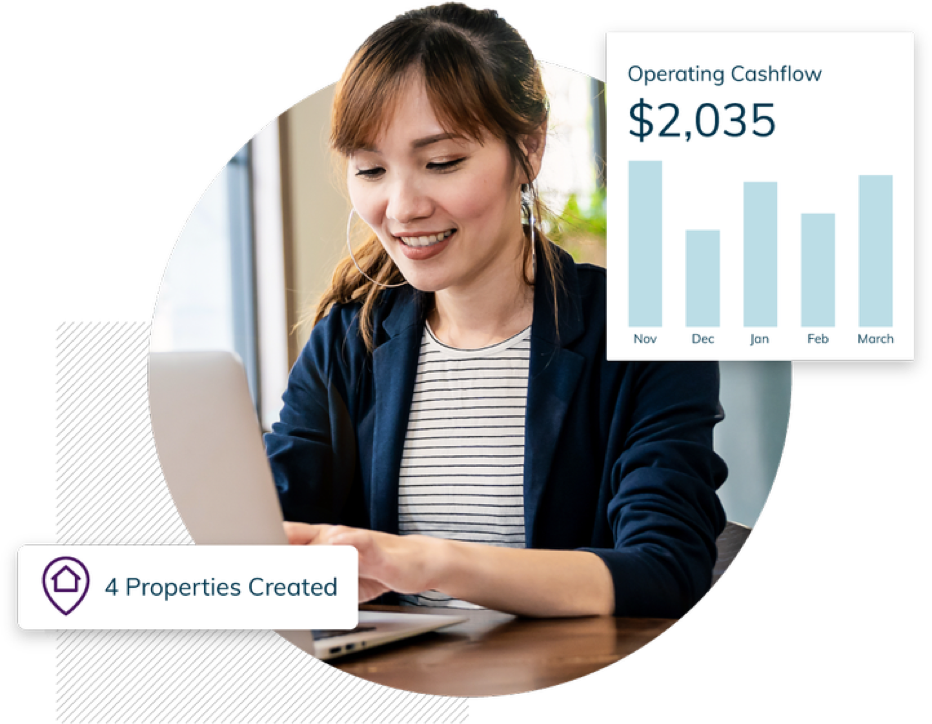Did you know that you can invest in your retirement with a self-directed IRA for real estate? You can, but there are a number of aspects to consider if you want to do it correctly and avoid the IRS’s ire.
In this guide, we’ll explain self-directed IRAs and their benefits to help you decide if this investment avenue is right for you. You’ll learn what a self-directed IRA is, what you can invest in with one, how to purchase property with an IRA, and the pros and cons you’ll have to consider along the way.
For investors looking to diversify their portfolios with real estate, this is a great place to start.

What is a Self-Directed IRA?
Self-directed individual retirement accounts (SDIRAs) enable individuals to invest in alternative assets like crypto, startup companies, and real estate. Compared to traditional IRAs, which typically invest in stocks, bonds, and mutual funds, SDIRAs are a tool for diversifying retirement investments using non-traditional assets.
One of the most popular non-traditional classes is real estate. In fact, the term “real estate IRA” has become synonymous with SDIRAs. Properties usually appreciate in value, so holding real estate in an SDIRA is an attractive option because it shields the property from capital gains taxes upon its sale, allowing you to save money on taxes for retirement.
It is important to note that you cannot personally use the property. There are a number of rules that govern how investors can and cannot manage their properties, which we’ll discuss in more detail below.
The key takeaway is that if you go this route, you will not personally own the property; your IRA will.
Taxes and Real Estate IRAs
Like other IRAs, SDIRAs let you choose how you’ll be taxed — either before you contribute to the account or when you start collecting payments. Note that growth in any IRA isn’t taxed. It sounds more complex than it actually is.
You can fund your account using pre-tax dollars and pay taxes on disbursements (Traditional IRA), or you can pay taxes upfront and enjoy tax-free distributions later (Roth IRA).
But these aren’t the only retirement options available. Self-employed investors can set up a simplified employee pension individual retirement arrangement or SEP IRA. Small businesses (fewer than 100 employees) can utilize a savings incentive match plan for employees, aka a SIMPLE IRA. Both SEP and SIMPLE IRAs follow the Traditional IRA tax model.
When making this choice, you’ll need to consider your age, income, source of income, and when you plan to start making withdrawals, among other factors. We’ll break down more of the details below, though our primary focus will rest on Traditional and Roth IRAs.
Note: You can leverage multiple IRA accounts to gain a mix of tax advantages. But there is a catch: the IRS set the 2024 annual contribution limit at $7,000 for all your accounts. If you’re over 50, you can contribute $1,000 more.
In other words, you cannot contribute more than $7,000 (or $8,000) to your IRA(s), no matter how many you have. Of course, there are exceptions, which you can read about in the IRS documentation here.
Traditional IRA
The federal government created the Employee Retirement Income Security Act of 1974, or ERISA, to encourage Americans to save for retirement. As pensions fell out of favor with the corporations and businesses that typically funded them, ERISA provided a way for people to save for retirement.
Note: You don’t have to be a U.S. citizen to open an account; you just need to earn income in the States.
With a Traditional IRA, you fund the account with pre-tax dollars, deferring taxation until you start withdrawing funds. Then, the IRS taxes them as regular income, subject to your tax bracket.
However, one advantage of a Traditional IRA is that you can deduct the total amount of your contributions from your taxable income for a given year, thereby lowering your tax liability upfront.
Regarding withdrawal guidelines, you can withdraw money from a Traditional IRA without penalty after the age of 59.5, and you must begin disbursing by the age of 72 or 73 (depending on your year of birth) or face penalties. If you disburse before 59.5, that withdrawl could be added to your gross income, plus a 10% penalty, and taxed. Read about the guidelines here.
If you plan to invest in real estate property with a Traditional IRA, you will pay taxes on the payments made to you later. If you think you’ll be in a lower tax bracket when you start distributing the funds, you’ll pay fewer taxes on distributions made to you, so a Traditional IRA may make sense in that situation.
Roth IRA
The Roth IRA was created in 1997. It’s a part of the Taxpayer Relief Act and is named after Delaware Senator William Roth. With a Roth IRA, investors contribute to their accounts with post-tax dollars. That means disbursements won’t be taxed as long as a few conditions are met.
If you withdraw funds from your contributions, not the earnings generated by the account, you can do so at any time, as the IRS has already taxed them. The story changes if you plan on taking earnings out of the account.
If you withdraw investment earnings, you must meet specific requirements to avoid paying income taxes and a 10% early withdrawal penalty.
The account must be older than five years, and you must be using the funds based on one of the following conditions:
- You’re at least 59.5 years old
- You’re permanently disabled
- You’re the beneficiary of a deceased account holder
- You’re taking out $10,000 to buy your first house
These examples are just beginning; for a complete list of exceptions, read Retirement Topics: Exceptions to tax on early distributions from the IRS.
These accounts are appealing compared with traditional IRAs because of a number of advantages related to withdrawal guidelines. Plus, if you expect taxes to increase until your retirement, paying a lower tax now and collecting your disbursements tax-free later is a good play.
However, unlike Traditional IRAs, contributions made to Roth IRAs are not tax deductible. Regarding real estate investing, if the property you invest in appreciates substantially, you won’t be subjected to paying taxes on that growth, no matter your tax bracket.
Now that you’ve got an idea of the benefits and drawbacks of each type of IRA, let’s go over some steps you can take to use an IRA for real estate investing.
How to Buy Property Using an SDIRA for Real Estate
The most important thing to remember is that you cannot simply transfer a property you already own into an IRA. You must buy the property with IRA funds from the start. To complete this objective, follow some guidelines to remain IRS compliant.
1. Select a Self-Directed IRA Custodian
Not all services offer investors the option to invest in real estate. If you’re interested in using IRA funds to purchase real estate, consider Rocket Dollar. Rocket Dollar uses a custodian well-versed in real estate transactions, and when you use the code TURBO when you sign up you’ll save $100. Plus, Rocket Dollar doesn’t charge a ton of fees.
2. Fund the Self-Directed IRA
Once you’ve selected Rocket Dollar or a similar service, you can transfer funds from an existing IRA or a 401(k) into the self-directed IRA account. Real estate might be the answer if you’ve saved substantial amounts of money and now you’re looking for a place to reinvest it. Just be careful not to put all your eggs in one basket.
3. Identify the Property
Identify the property you wish to purchase. It could be residential, commercial, land, or another type of real estate.
4. Do Your Due Diligence
Just as you would in any real estate transaction, you or the IRA custodian must conduct due diligence on the property, including inspections, appraisals, and legal reviews.
5. Purchase
Once the property is selected, the purchase offer will be made in the name of the IRA, not you personally. You can leverage a loan to help pay for the purchase of an investment property, but that does open you up to Unrelated Debt Finance Income taxes (UDFI). For more information on UDFI, read this Rocket Dollar article.
6. Manage the Property
All expenses related to the property, including taxes, insurance, and repairs, must be paid from the SDIRA. Any rental income the property generates will have to flow into the SDIRA, not your personal accounts. If you’re a hands-off investor, this can be a good move. But if you want to maintain the property yourself, an SDIRA is not the best fit for you due to this hands-off requirement. If you want to hold real estate in an SDIRA without having to worry about upkeep, consider REITs.
7. Compliance and Record Keeping
It’s critical to understand that all transactions related to the property are fully compliant with IRS rules and regulations. Detailed record-keeping provides evidence that all transactions and income are strictly related to the IRA-related property.
Pros and Cons of Using an SDIRA for Real Estate
Now that you have an idea of how to buy a property using this investment vehicle let’s consider the pros and cons of going through with the sale and their implications.
SDIRA Real Estate Pros
- Tax-advantaged growth: Rental income and any property value appreciation within the SDIRA grow tax-free or tax-deferred until you withdraw funds in retirement.
- Control over investments: Unlike traditional stock and bond portfolios, you can choose specific properties aligned with your investment goals.
- Higher potential returns: Real estate can offer higher returns than traditional IRA investments.
- Diversification: SDIRA real estate provides diversification beyond stocks and bonds, potentially mitigating risk.
- Asset protection: Creditors cannot touch assets held within your SDIRA.
SDIRA Real Estate Cons
- Complexity: Managing real estate through an SDIRA involves more paperwork and compliance with IRS regulations.
- Higher fees: Some SDIRA custodians often charge higher fees for managing real estate investments.
- Illiquidity: Real estate is less liquid than stocks and bonds, making it harder to access funds quickly.
- Prohibited transactions: You cannot self-deal, like buying or selling property to yourself or related parties.
- Fluctuating market: Real estate values can fluctuate, potentially leading to losses.
- Unrelated debt-financed income (UDFI): If you use debt to finance the property within the SDIRA, the rental income might be subject to UDFI tax.
- Restrictions: The property must be for investment purposes only, and you cannot personally use it.
- Potential disqualification: Violating SDIRA rules can lead to disqualification and significant tax penalties.
Next Steps and Final Words
While this post did cover a lot of ground, it isn’t an exhaustive compendium of information regarding self-directed IRAs for real estate. There is still so much to learn. A great place to start is with the webinar embedded directly above.
Or, you could head over to Rocket Dollar, use the code TURBO, and save $100 to start an account and begin the process. Their highly skilled sales team can answer just about any question you have, though you may need to speak with your accountant or tax attorney for advice specific to your situation.
If you do find yourself opting to invest in real estate with your IRA, TurboTenant can help make the investment as passive as possible to help you steer clear of IRS penalties and rulings that risk disbursing your entire investment because of a mistake.
Sign up for a TurboTenant account and see how our platform enables passive investors to get more done without ever stepping foot on the premises. It’s particularly useful for accounting and general organization, plus it’s cheaper than a property manager.







